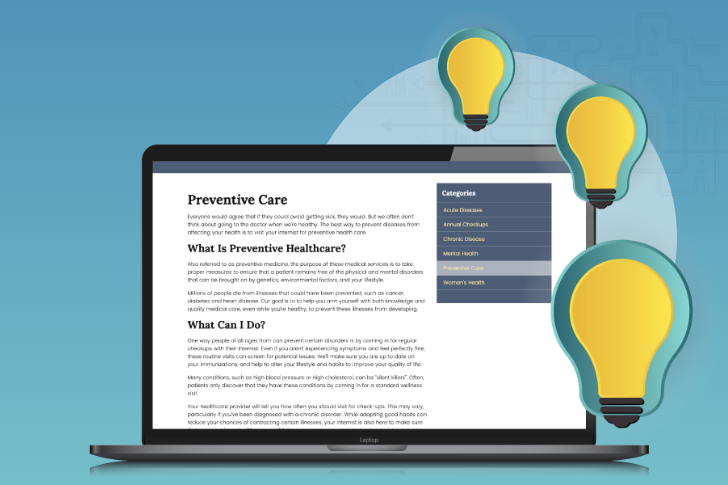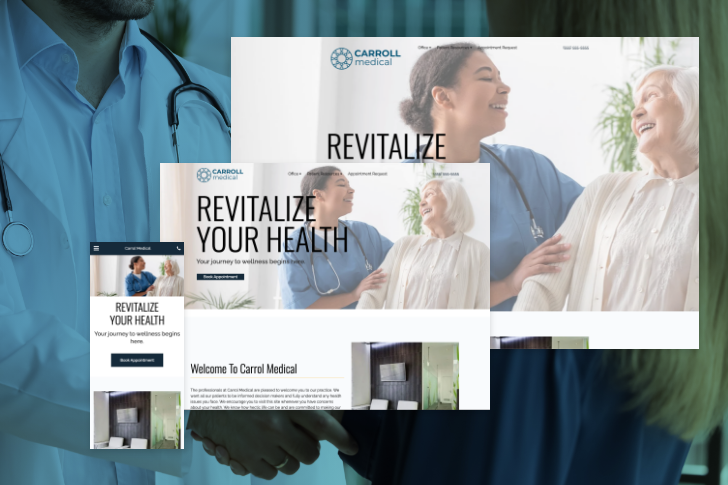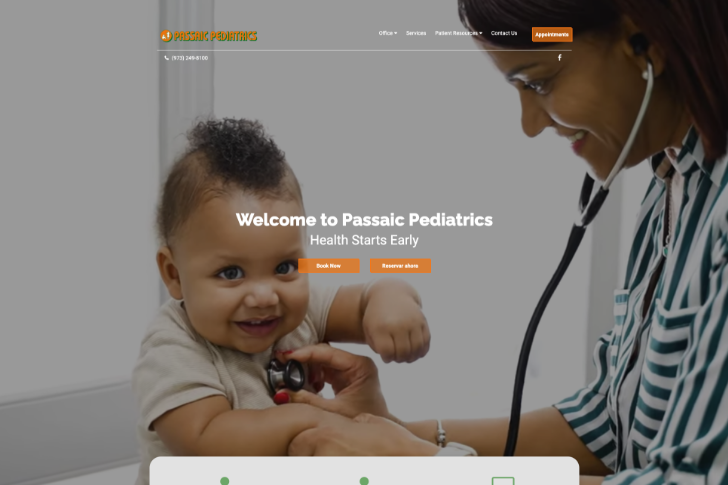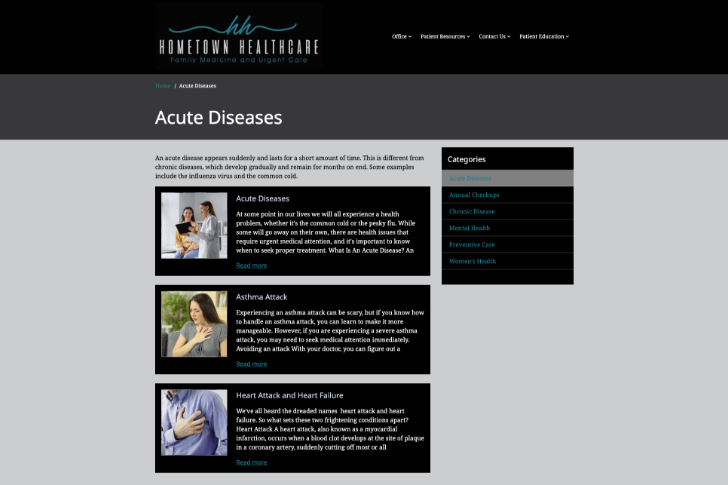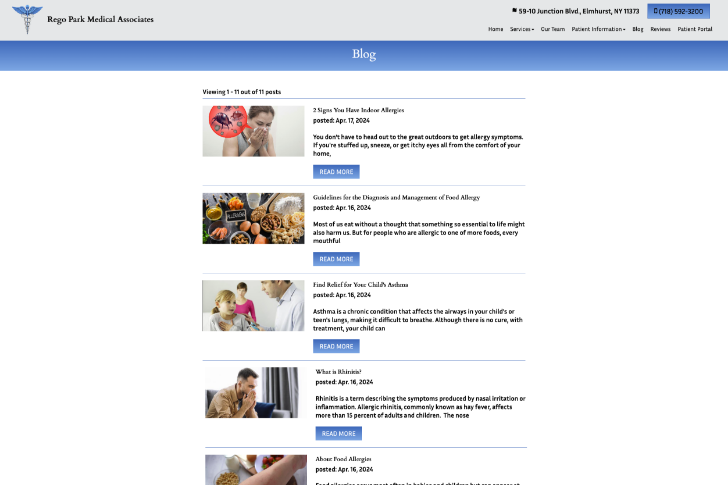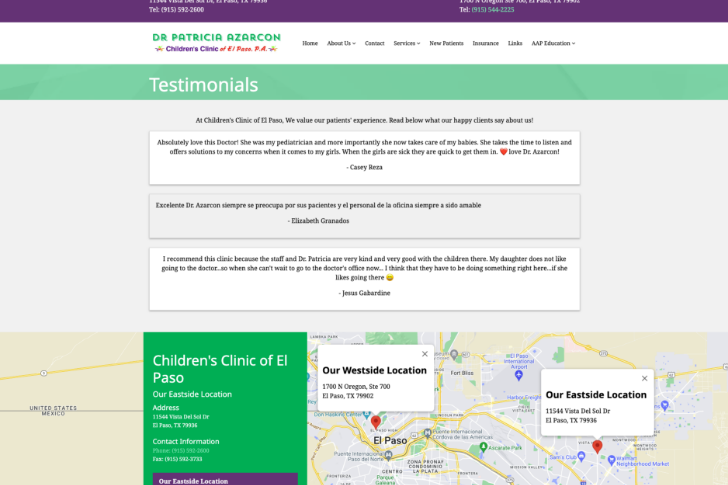They don’t teach SEO (search engine optimization) in medical school, but more and more, it’s a crucial skill for success as a physician with a medical practice. Like medicine, it’s a bit of a blend of art and science. A doctor’s online presence is as important as their “bedside manner.” There are technical skills to master, and an intuition that develops as you implement. It’s an ongoing pursuit that has the potential to transform a surviving practice into a thriving one.
Investing in SEO is an investment in the health and longevity of your practice. In today’s digital age, having a strong online presence is mandatory for any business, and medical services and practices are no exception. We live so much of our lives online and Search Engine Optimization (SEO) is a powerful tool that can help doctors attract more patients, enhance their online visibility, and grow their practice. This comprehensive guide will explore 11 effective SEO strategies specifically tailored for medical practices.

1. Optimize Your Website for Local Searches
Local SEO is vital for medical practices as it helps you connect with patients in your vicinity. Ensure your website is optimized for local patients search by including your practice’s name, address, and phone number (NAP) consistently across all online platforms for local listings.
Additionally, creating and optimizing a Google My Business profile is essential for local search results. Encourage satisfied patients to leave reviews on your Google My Business page and other review sites, as positive reviews can significantly impact your local search rankings. For example, using local keywords in your content, such as “pediatrician in Chicago” or “dental clinic in San Francisco,” can improve your rankings for local searches and place you on Google maps. Furthermore, engaging with local directories and participating in community events can further enhance your local SEO efforts and search engine results.
TIP: Use tools like Moz Local to ensure your NAP information is consistent across all platforms. Inconsistent information can confuse search engines and lower your local search ranking. Participating in local health fairs or community events and sharing those experiences on your website and social media can also boost local engagement.
2. Create High-Quality, Relevant Content
Content is king in medical practice SEO. Regularly publishing high-quality, relevant content that addresses the needs and concerns of your patients is crucial. This can include blog posts, articles, videos, and infographics.
Focus on topics that are commonly searched by your target audience, such as treatment options, health tips, and patient testimonials. This will help you narrow in on keyword optimization for your target audience. For instance, writing detailed healthcare services articles on conditions you treat, like “Managing Chronic Back Pain: Treatment Options and Tips,” or creating video tutorials on common exercises to alleviate back pain or improve posture, can provide valuable information to your audience about healthcare services.
Using keyword research tools to identify popular search terms related to your practice and incorporating relevant keywords naturally into your content will further enhance your Google search and other relevant searches. This type of keyword optimization can make all the difference in getting you onto the envied “first page” of results. Link and share that content on your social media platforms to broaden your reach and attract prospective patients.
TIP: An expert SEO team like Officite can perform keyword research and help you rank for keywords for your most profitable services and procedures offered. This allows you to seamlessly plug in an effective SEO strategy. Additionally, you might consider creating long-form content that thoroughly covers a topic with target keywords. This can help establish your practice as an authority in the field and improve your overall search engine results.
3. Optimize for Mobile Users
With the increasing use of smartphones, optimizing your website for mobile users is essential. A mobile website not only improves user experience but also boosts your SEO rankings, especially for medical websites and healthcare practices.
Ensure your website is responsive, meaning it adjusts seamlessly to different screen sizes and devices. For example, ensuring that your site’s navigation is intuitive and easy to use on mobile devices, using mobile-friendly call-to-action buttons that are easy to tap, and testing your website’s mobile-friendliness using tools like Google’s Mobile-Friendly Test are all critical steps. Making necessary adjustments to enhance mobile usability ensures that potential patients can access your services and information easily, regardless of their device.
TIP: Implement Accelerated Mobile Pages (AMP) to improve your mobile site speed. AMP is a Google-backed project designed to help web pages load faster on mobile devices. Faster load times improve user experience and can positively impact your website traffic and search engine ranking.
4. Improve Page Load Speed
A slow-loading website can negatively impact your SEO rankings and deter potential patients. Optimizing your website’s load speed is essential for steady website traffic. Compressing images and using the correct file formats, minimizing the use of large scripts and heavy plugins, and leveraging browser caching and content delivery networks (CDNs) are all effective strategies.
For example, using image compression tools like TinyPNG or ImageOptim to reduce image file sizes, implementing lazy loading for images and videos, and using tools like Google PageSpeed Insights to identify areas for improvement can help track your website’s load speed. Ensuring fast load times is crucial for retaining visitors and improving your search engine rankings.
TIP: Regularly audit your site for speed performance using tools like GTmetrix or Pingdom. Look for elements that may be slowing down your site, such as outdated plugins or large images, and optimize them accordingly. Also, consider using a lightweight theme if your site is built on a CMS like WordPress.
5. Use Structured Data Markup
Structured data markup (schema markup) helps search engines understand the content of your website better. By adding structured data to your site, you can enhance your search engine listings with rich snippets, such as star ratings, event dates, and practice details. Using medical-specific schema markups to provide detailed information about your services and implementing FAQs schema to highlight common questions and answers about your practice can improve your search visibility. Rich snippets can make your search listings more attractive and informative, increasing the likelihood of clicks from new patients.
TIP: Use Google’s Structured Data Markup Helper to add schema markup to your website easily. Focus on marking up key information such as your practice’s address, phone number, business hours, and patient reviews. This can help your listings stand out in search results and provide potential patients with useful information at a glance. If your website is not showing up on Google, consider making the switch to an Officite website that includes our SEO services. Fill out the form below to learn more.
Become Visible Online with Officite
6. Build Quality Backlinks
Backlinks from reputable websites can significantly boost your SEO rankings through link building. Focus on acquiring quality backlinks by creating shareable content that other websites want to link to, guest blogging on reputable health and medical websites, and building relationships with local businesses and healthcare providers for link exchanges.
For instance, writing guest articles for prominent health blogs or medical publications, and collaborating with other healthcare professionals to create joint content or webinars, can help you build a network of quality backlinks. High-quality backlinks act as endorsements from other websites, signaling to search engines that your content is valuable and trustworthy—increasing your likelihood to land on the coveted first page.
TIP: Use tools like Ahrefs to identify and reach out to websites that have linked to similar content. Building relationships with influencers in the healthcare industry can also provide opportunities for link building backlinks. Create valuable resources, such as comprehensive guides or research studies, that others will want to reference and link to.
7. Leverage Social Media
Social media can play a significant role in your SEO strategy and a key driver in patient acquisition. Actively engage with your audience on platforms like Facebook, Instagram, LinkedIn, and Twitter. Share your content on your practice Facebook business page, interact with potential patients, and encourage them to share their experiences and positive online reviews.
For example, creating a social media calendar to plan and schedule your posts, and using live videos on Facebook or Instagram to host Q&A sessions with your patients can significantly boost your engagement rates.
Including social media sharing buttons on your website to make it easy for visitors to share your content on their social media profiles can drive traffic to your website and improve your visibility. Similarly, make sure your web page/website url is always linked in your social media profiles, especially your Facebook business page. It’s an easy thing to overlook, but makes a big difference in your monthly search volume.
TIP: Use social media analytics tools like Hootsuite or Buffer to track engagement and identify which types of content perform best. Consider converting well-performing organic social media into paid ads. Regularly posting updates, responding to comments, and sharing valuable content can build a strong online community and enhance your SEO efforts.
8. Create a Blog
A blog is a powerful tool for driving traffic to your website and improving your SEO rankings. Regularly publishing informative and engaging blog posts related to your practice can help attract new visitors and keep your current audience engaged.
Topics can include health tips, patient success stories, and the latest medical news. For example, writing blog posts about seasonal health concerns, like “Allergy Management During Spring,” and sharing patient success stories with before-and-after photos (with their consent) can provide valuable information to your patients.
Optimizing your blog posts with relevant keywords, meta descriptions, and internal links to other pages on your website can further enhance your SEO efforts and ultimately attract more patients.
TIP: Use a content calendar to plan your blog posts and ensure regular updates. Consistency is key in maintaining reader interest and improving SEO. Guest blogging opportunities can also expand your reach and introduce your practice to new audiences.
9. Monitor and Analyze Your SEO Performance
Regularly monitoring and analyzing your SEO performance is crucial for making informed decisions and improving your strategies. Use tools like Google Analytics, Google Search Console, and SEO-specific tools like SEMrush or Ahrefs to track your website’s performance.
Setting up goals in Google Analytics to track key performance indicators (KPIs) like appointment bookings or contact form submissions, and using heatmaps to see how users interact with your website and identify areas for improvement are effective strategies. Paying attention to metrics such as organic traffic, bounce rate, keyword rankings, and conversion rates can help you gauge the effectiveness of your SEO efforts.
TIP: Set up automated reports in Google Analytics to receive regular updates on your site’s performance. Use A/B testing to experiment with different elements of your site and determine what works best. Regularly reviewing and analyzing your data ensures you can make data-driven decisions to continuously improve your SEO strategy.
10. Optimize for Voice Search
With the rise of voice-activated devices like Alexa and Google Home, optimizing your website for voice search is becoming increasingly important. Voice searches are typically longer and more conversational, so focus on natural language and long-tail keywords.
To illustrate, creating content that answers common patient questions, like “How does chiropractic care relieve back pain?” and using conversational language in your blog posts and FAQs to align with voice search queries can improve your chances of appearing in voice search results.
TIP: Use tools like AnswerThePublic to find common questions related to your practice and create content that answers these queries. Voice search optimization can make your practice more accessible to patients using voice-activated devices, increasing your reach and engagement.
11. Invest in Professional SEO Service
Depending on your situation, search engine optimization can be complex and time-consuming. Consider investing in professional SEO for medical practices to ensure your medical practice is fully optimized and stays ahead of the competition.
Companies like Officite offer specialized SEO tailored for medical practices. Partnering with an SEO agency that has experience working with healthcare providers and using comprehensive SEO audits to identify strengths and weaknesses in your current strategy can help you achieve your digital marketing goals and optimize your efforts.
Professional SEO for medical practices can provide the expertise and resources needed to ensure your practice is leveraging the latest SEO techniques and strategies, including: local SEO tactics; a keyword research tool to target keywords, related keywords, and long tail keywords; medical search engine optimization; quality blog post content; website content; Google business profile listings, and integration of patient reviews.
TIP: Choose an SEO provider like Officite with experience in the healthcare industry. Look for case studies or testimonials that demonstrate their success in improving the online presence of other medical practices. A specialized provider will understand the unique challenges and opportunities in medical SEO, ensuring you get the best results.
About Officite
Officite specializes in medical SEO services, helping healthcare providers enhance their online presence, attract potential patients, and grow their practices. Our team of experts uses proven SEO strategies tailored specifically for medical practices to ensure you achieve your digital marketing goals. Learn more about Officite’s medical SEO services.
By implementing these 11 proven SEO strategies, you can improve your online visibility, attract potential patients, and ultimately grow your practice with effective search engine results. Whether you’re new to SEO (search engine optimization) or looking to refine your existing strategies, these tips will help you stay ahead in the competitive healthcare landscape.

Maryrose Dooley expertly guides small practices through the digital landscape, offering marketing strategies to attract more patients. Her unique blend of business acumen and design expertise creates visually appealing solutions that set businesses apart. With a passion for leveraging technology, Maryrose helps businesses of all sizes achieve their goals and stand out from the competition.



